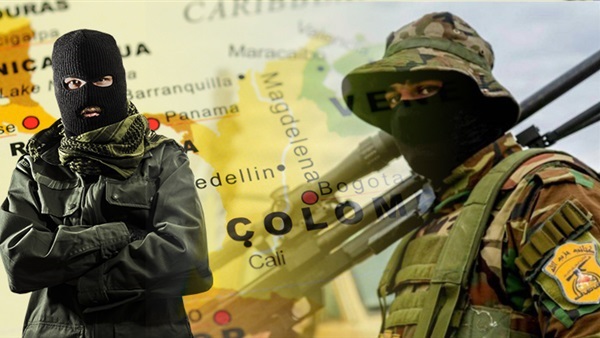The leaders of Latin America must coordinate their vigilance and counter-measures

The Sunni-Shi’ite
conflict has come to Latin America. Sunni Islamic State (ISIS) is following in
the footsteps of the long-entrenched Shi’ite Hezbollah.
Venezuela under Hugo Chavez was an Iranian playground,
giving free rein to its Hezbollah acolyte to arm, train and convert. During the
2006 war with Israel, the entire Wayuu indigenous tribe converted to Islam,
adopting the Hezbollah name and consecrating the act by a failed attempt to
bomb the US Embassy in Caracas.
Now Dabiq, ISIS’s website, has announced its mission to
convert the native Mayas in Chiapas, Mexico and across the border in Guatemala.
Exploiting the poverty and marginalization of the indigenous
peoples, ISIS announced an “anti-colonial” campaign to Islamicize, among
others,the Tainos in the Caribbean, the Wayuu beyond Venezuela in Ecuador, the
Guarani and Amazonian tribes in Brazil.
Such sensationalist pretensions are improbable, but the
Mexican beginning replicates the Syrian/Iraqi example of cooperation with
smuggling cartels.
Another Dabiq release, picked up by the Breitbart website,
indicates that ISIS “could purchase a nuclear weapon in Pakistan and then
smuggle it into the U.S. through Mexico by using existing traffic networks in
Latin America.”
The prestigious Bulletin of the Atomic Scientists quoted the
Nuclear Threat Initiative’s naming of Latin American countries, “home to groups
interested in illicitly acquiring nuclear materials,” listing in Central
America and the Caribbean Guyana, Honduras and Surinam, and in South America
Colombia, Ecuador and Peru.
Indeed, among these are countries identified in the last
report of the assassinated Argentinian AMIA Jewish Centre atrocity investigator
Alberto Nisman – countries he claimed to have been infiltrated by 90 Hezbollah
sleeper cells.
Deeply implicated in the Teheran- planned 1992 Israeli
Embassy and 1994 AMIA attacks, Hezbollah has long been active across the
continent, especially in the lawless “Triple Frontier” region between Paraguay,
Brazil and Argentina.
When looking from the Paraguay side across the bridge over
the Iguazu Falls, huge Shi’ite mosques dot the Brazilian horizon. Ayatollahs in
SUVs dart across this no-man’s land.
Down the road, at the signposted Arab Sports Club, locals
told us of hearing continual shooting from inside, claiming it was a
para-military training range.
In the Triple Frontier, there reigns a harmony of sorts
between gangs busy with money laundering, human trafficking and smuggling of
drugs, arms and body parts, human trafficking.
Turf wars are rare.
An ISIS arrival, a Sunni infiltration into what prime
minister Yitzhak Rabin called “Hezbollahland” – could create a firestorm.
Far more dangerous in its rivalry with a Shi’ite Hezbollah
network – now battle-hardened in Syria and the beneficiary of Iranian largesse
– are the prospects of a radioactive/radiological dispersion device or dirty
bomb as a demonstration of ISIS Sunni one-upmanship.
The Pan-American Highway from Argentine Patagonia to the
Mexican Rio Grande could be its cartel-delivery route to North America. The
leaders of Latin America must coordinate their vigilance and counter-measures.
As the Bulletin of Atomic Scientists vividly illustrates,
the current threat stands at “three minutes to midnight.”





